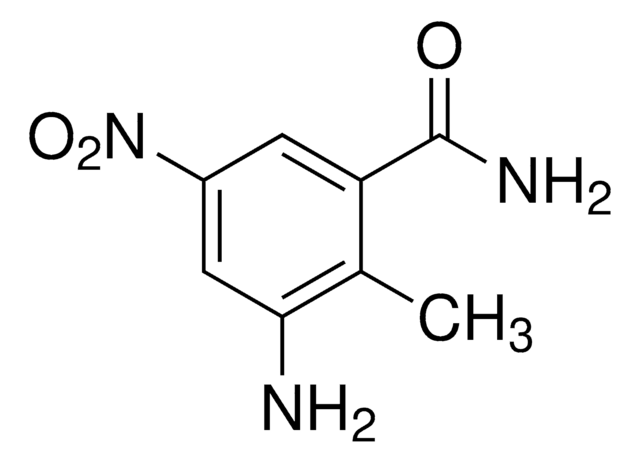Unfortunately, we do not determine the conformation of this product.
SML0982
Astaxanthin
≥97% (HPLC), powder, PPARγ
Sinônimo(s):
3,3′-Dihydroxy-β-carotene-4,4′-dione, trans-Astaxanthin
Selecione um tamanho
Selecione um tamanho
About This Item
Produtos recomendados
Nome do produto
Astaxanthin, ≥97% (HPLC)
Ensaio
≥97% (HPLC)
Formulário
powder
condição de armazenamento
desiccated
protect from light
cor
, pink to very dark purple
solubilidade
DMSO: 1 mg/mL (warmed)
temperatura de armazenamento
−20°C
cadeia de caracteres SMILES
O[C@H]1CC(C(=C(C1=O)C)\C=C\C(=C\C=C\C(=C\C=C\C=C(/C)\C=C\C=C(/C)\C=C\C2=C(C(=O)[C@H](CC2(C)C)O)C)\C)\C)(C)C
InChI
1S/C40H52O4/c1-27(17-13-19-29(3)21-23-33-31(5)37(43)35(41)25-39(33,7)8)15-11-12-16-28(2)18-14-20-30(4)22-24-34-32(6)38(44)36(42)26-40(34,9)10/h11-24,35-36,41-42H,25-26H2,1-10H3/b12-11+,17-13+,18-14+,23-21+,24-22+,27-15+,28-16+,29-19+,30-20+/t35-,36-/m0/s1
chave InChI
MQZIGYBFDRPAKN-UWFIBFSHSA-N
Descrição geral
Aplicação
- as an antioxidant to study its effect on Brachionus manjavacas (Rotifera) population growth[2]
- to study its effects on the treatment of diabetic retinopathy.[2][3]
- to investigate its role in restoring the expression of Nrf2 (nuclear factor erythroid 2 p45-related factor 2) and glutathione S-transferase P1 (GSTP1) through epigenetic modification in human prostate LNCaP cells.[1]
Ações bioquímicas/fisiológicas
Outras notas
Código de classe de armazenamento
11 - Combustible Solids
Classe de risco de água (WGK)
WGK 3
Ponto de fulgor (°F)
Not applicable
Ponto de fulgor (°C)
Not applicable
Escolha uma das versões mais recentes:
Certificados de análise (COA)
Não está vendo a versão correta?
Se precisar de uma versão específica, você pode procurar um certificado específico pelo número do lote ou da remessa.
Já possui este produto?
Encontre a documentação dos produtos que você adquiriu recentemente na biblioteca de documentos.
Os clientes também visualizaram
Artigos
DISCOVER Bioactive Small Molecules for Nitric Oxide & Cell Stress Research
-
Is the Astaxanthin SML0982 in the 3S, 3'S conformation or is it a mix?
1 answer-
Helpful?
-
Active Filters
Nossa equipe de cientistas tem experiência em todas as áreas de pesquisa, incluindo Life Sciences, ciência de materiais, síntese química, cromatografia, química analítica e muitas outras.
Entre em contato com a assistência técnica






![1,8-Diazabiciclo[5,4,0]undec-7-eno 98%](/deepweb/assets/sigmaaldrich/product/structures/120/564/5b373e23-1624-489c-8efb-692de0f96ffb/640/5b373e23-1624-489c-8efb-692de0f96ffb.png)




